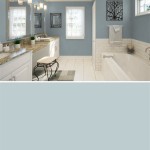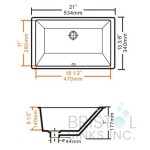How to Fix a Peeling Ceiling in Your Bathroom
A peeling ceiling in a bathroom is a common problem, often stemming from moisture accumulation. The combination of steam from showers and baths, coupled with inadequate ventilation, creates an environment conducive to paint and drywall degradation. Addressing this issue promptly is essential, not only for aesthetic reasons but also to prevent further structural damage and potential mold growth.
Before undertaking any repair work, it is crucial to identify the underlying cause of the peeling. Masking the symptoms without tackling the root problem will only lead to a recurrence of the issue. This article provides a detailed guide on diagnosing and rectifying a peeling ceiling in a bathroom.
Identifying the Cause of the Peeling
The primary culprit behind peeling paint in a bathroom is typically excessive moisture. However, there can be several contributing factors that exacerbate the problem. A thorough inspection of the bathroom and its surroundings is necessary to pinpoint the exact cause.
Ventilation Issues: The most common reason is inadequate ventilation. Bathrooms should have a functioning exhaust fan that is used during and after showering or bathing. Check the exhaust fan to ensure it is operating efficiently. This involves cleaning the fan blades and ensuring the vent is not clogged with dust or debris. If the fan is old or undersized, consider replacing it with a more powerful model that is appropriately sized for the bathroom's square footage. A fan’s capacity is measured in cubic feet per minute (CFM). A general rule is that a bathroom requires 1 CFM per square foot.
Leaks: Water leaks, whether from plumbing fixtures, the roof, or adjacent rooms, can saturate the ceiling and cause the paint to peel. Inspect the ceiling for water stains, which are usually brown or yellowish. If stains are present, trace them back to their source. Check the plumbing around the shower, toilet, and sink for any signs of leaks. Examine the ceiling above the bathroom for signs of leaks from the roof, especially after rainfall.
Type of Paint: Using the wrong type of paint can also lead to peeling. Bathrooms require paint that is specifically formulated to resist moisture and mildew. Standard interior paints are not designed for the humid conditions of a bathroom and are more prone to peeling and blistering. Latex-based paints with a satin or semi-gloss finish are generally recommended for bathrooms because they are more durable and easier to clean.
Poor Surface Preparation: Inadequate surface preparation before painting can also contribute to peeling. This includes painting over a dirty or greasy surface, failing to prime the ceiling properly, or applying paint over existing layers of loose or peeling paint. Proper surface preparation ensures that the new paint adheres effectively to the ceiling.
Condensation: Excessive condensation in the bathroom can also lead to peeling paint. This is more likely to occur in bathrooms with poor insulation or single-pane windows. The warm, moist air from showers and baths condenses on cold surfaces, leading to water accumulation on the ceiling. Improving insulation and installing double-pane windows can help to reduce condensation.
Preparing the Area for Repair
Once the cause of the peeling has been identified and addressed, the next step is to prepare the area for repair. This involves removing the loose paint, cleaning the surface, and priming the ceiling.
Safety Precautions: Before starting any repair work, it is essential to take necessary safety precautions. Wear safety glasses to protect your eyes from dust and debris. Use a dust mask or respirator to avoid inhaling paint particles. Cover the floor with drop cloths to protect it from paint and debris. Ensure the bathroom is well-ventilated while working.
Removing Loose Paint: Use a paint scraper or putty knife to remove all loose and peeling paint from the ceiling. Work gently to avoid damaging the underlying drywall. For stubborn areas, you may need to use a heat gun or a chemical paint stripper. If using a heat gun, be careful not to overheat the drywall, as this can cause it to crack. If using a chemical paint stripper, follow the manufacturer's instructions carefully and ensure adequate ventilation.
Sanding the Surface: After removing the loose paint, sand the surface to create a smooth and even finish. Use a sanding block or a power sander with a medium-grit sandpaper. Feather the edges of the sanded areas to blend them with the surrounding paint. This will help to create a seamless finish when you apply the new paint.
Cleaning the Surface: Once the surface has been sanded, clean it thoroughly with a damp cloth or sponge to remove any dust or debris. You may also need to use a mild detergent to remove any grease or grime. Ensure the surface is completely dry before proceeding to the next step.
Priming the Ceiling: Apply a coat of high-quality primer to the entire ceiling. Use a primer that is specifically formulated for bathrooms, as these primers are designed to resist moisture and mildew. Apply the primer evenly using a paintbrush or a roller. Allow the primer to dry completely before proceeding to the next step. This ensures proper adhesion of the paint. A stain-blocking primer is recommended if there are water stains.
Repairing the Ceiling and Preventing Future Peeling
With the area properly prepared, the final step is to repair any damage to the ceiling and apply a fresh coat of paint. Taking preventative measures can avoid future problems.
Repairing Damaged Drywall: If the peeling paint has damaged the drywall, you will need to repair it before painting. This may involve patching holes, filling cracks, or replacing entire sections of drywall. Use a drywall knife and joint compound to apply the patch, feathering the edges to blend with the surrounding area. Allow the joint compound to dry completely before sanding it smooth. Multiple thin coats are often better than one thick coat to prevent cracking during drying. Once sanded, prime the repaired areas before painting.
Applying Paint: Apply two coats of high-quality, moisture-resistant paint to the ceiling. Use a paint that is specifically formulated for bathrooms, such as a latex-based paint with a satin or semi-gloss finish. Apply the paint evenly using a paintbrush or a roller. Allow each coat of paint to dry completely before applying the next coat. Avoid applying too much paint in one coat, as this can lead to drips and uneven drying.
Improving Ventilation: To prevent future peeling, it is essential to improve ventilation in the bathroom. This may involve upgrading the exhaust fan, opening a window during and after showering or bathing, or installing a dehumidifier. Ensure that the exhaust fan is properly vented to the outside and that the vent is not blocked. Consider installing a timer switch for the exhaust fan to ensure it runs for an adequate amount of time after showering or bathing.
Controlling Moisture: Controlling moisture in the bathroom is also crucial for preventing future peeling. This may involve taking shorter showers, using cooler water, and wiping down the walls and ceiling after showering. Consider using a squeegee to remove water from the shower walls and door. Avoid leaving wet towels and bath mats in the bathroom, as this can increase humidity levels. Clean up spills promptly to avoid water damage.
Regular Maintenance: Regular maintenance can help to prevent future peeling. Inspect the ceiling regularly for signs of water damage or peeling paint. Address any issues promptly. Clean the ceiling periodically to remove dust and grime. Consider applying a fresh coat of paint every few years to maintain the ceiling's protective barrier. By addressing the underlying causes of moisture and implementing preventive measures, homeowners can prolong the lifespan of their bathroom ceilings and avoid the recurring problem of peeling paint.
Repairing a peeling ceiling in a bathroom requires careful diagnosis, thorough preparation, and proper execution. By identifying the source of moisture, addressing any underlying issues, and following the steps outlined in this guide, homeowners can effectively restore their bathroom ceilings and prevent future problems. The combination of correct materials, proper application techniques, and ongoing maintenance will contribute to a long-lasting and aesthetically pleasing result.

Common Ceiling Issues And What To Do About Them

How To Fix A Drywall In Ceiling Or Wall For Ever Tutorial

Painting A Bathroom Ceiling And Adding Trim Young House Love

Cutting Out Drywall Ceiling From Roof Leak Step By

No Bleach Ladders Clean Mold Off Bathroom Ceilings And Walls Use Safety Glasses

Painting A Bathroom Ceiling And Adding Trim Young House Love

Painting A Bathroom Ceiling And Adding Trim Young House Love

Painting A Bathroom Ceiling And Adding Trim Young House Love

No Bleach Ladders Clean Mold Off Bathroom Ceilings And Walls Use Safety Glasses

Painting A Bathroom Ceiling And Adding Trim Young House Love
See Also







